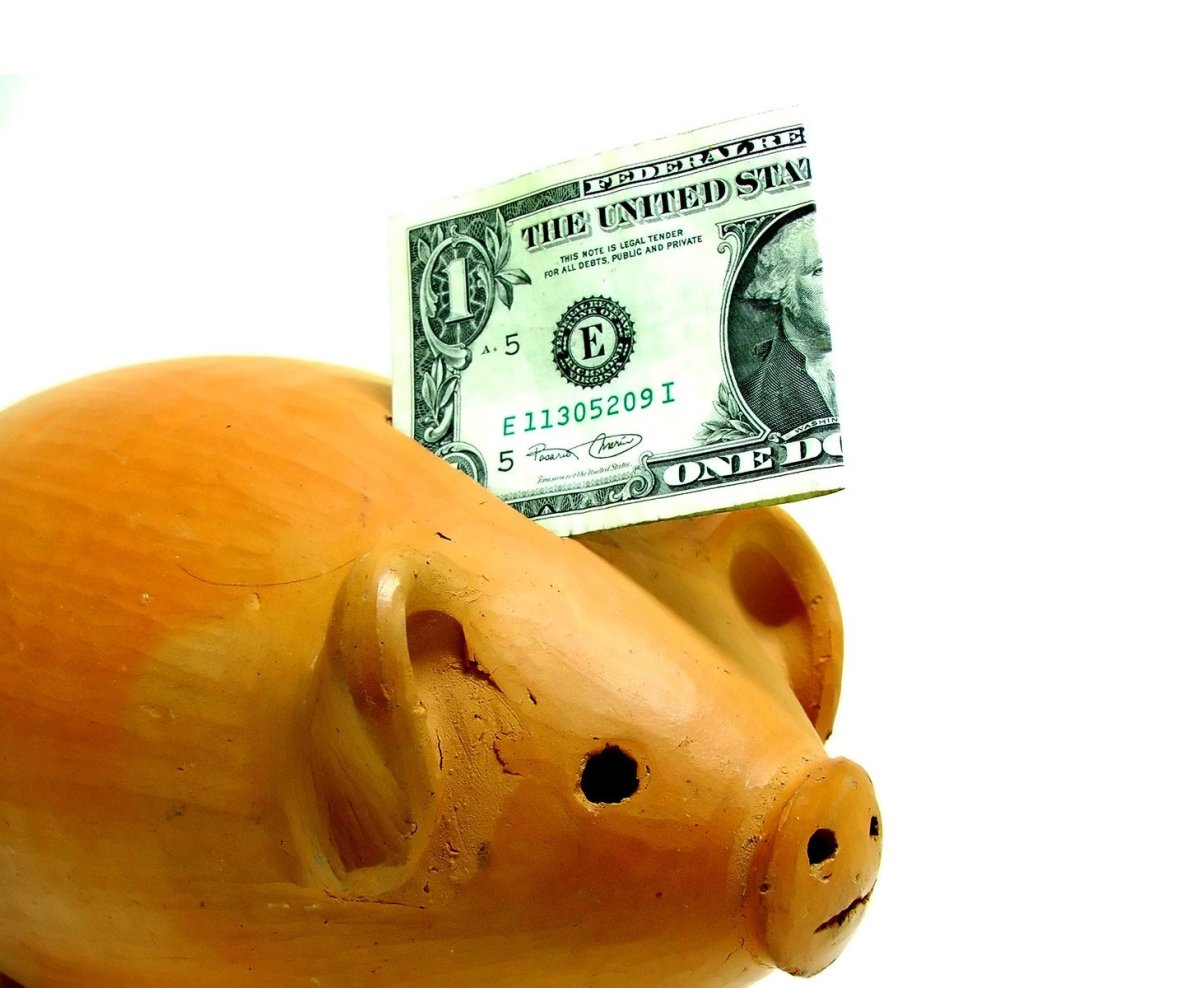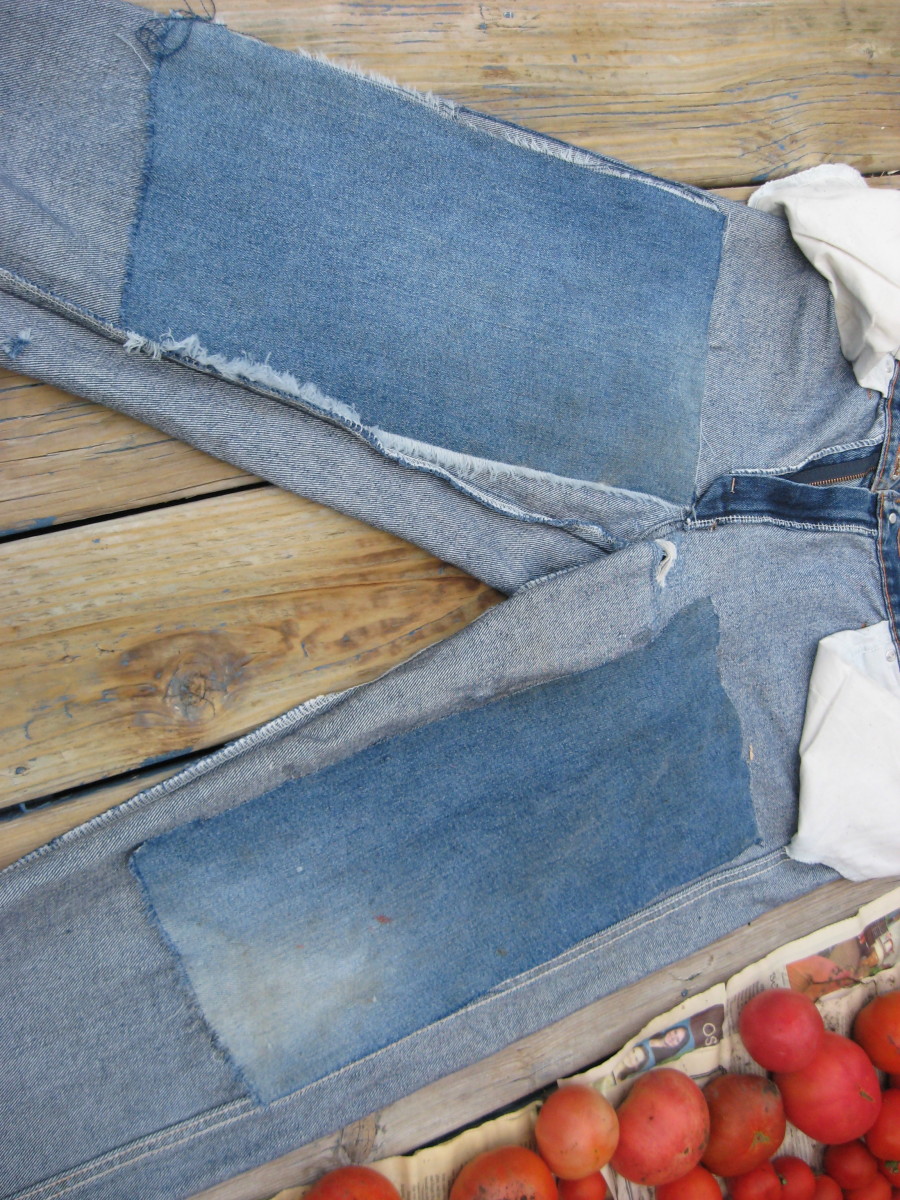Live Cheaper Every Day - Small Easy Steps To Saving Money
Saving money one small step at a time isn't painful
When we've let ourselves slide into living habits that don't really work well, we tend to dread changing to habits that work better for us. We think of making the move as a real chore. Sometimes we're right, it's not only a chore, but a downright pain in the neck.
But moving in small steps toward saving money isn't very difficult. As a matter of fact, sometimes it's barely noticeable. So take the small steps. Do one-time activities, or add one habit a week or one habit a month, until the one-time activities are done and the habits are all a part of the daily routine.
Then you can become a money saving expert.
How much money can you save on gas?
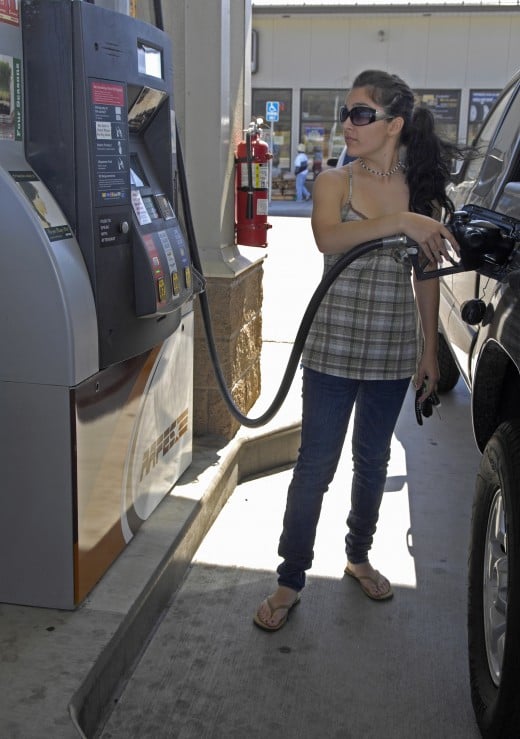
Step 1 - Combine those errands to save money and weekend chores
Because gasoline is a growing expense these days, start by saving what's already in the tank.
Combine any two reasons to drive into one reason to drive. If you're coming home from work, add one errand to your drive home. Unless it's an easy one, don't try to do more than one extra errand after you've already worked a full day, or it'll feel more like a burden.
Give yourself two or three errand add-ons per week, during the part of the week that's easiest for you. For example, if you're more tired towards the end of the week, do two or three errand add-on days during the first part of the week. When you get home and the errand is already done, or the weekend comes and you don't have to do that extra errand, you'll be glad and you'll want to keep doing it.
While you're paying attention to your errands, add having your tires checked for proper inflation to your errand list. Having tires that are either overinflated or underinflated lowers your gas mileage, and it shortens the life of your tires. Be sure to check the inflation occasionally from now on. Many gas stations have a separate paid air pump for checking and inflating tires. (Go during the daylight for this, as they usually aren't properly lighted.)
Step 2 - Heat only what you use
Go around your house this evening and see what doors are open to rooms that are not used, such as a spare bedroom or the door to the basement. Close them and keep them closed. If you have an upstairs with a door on the stairway, the crack at the bottom of the door can act as a chimney draft and suck warm air from the main floor to the unused upstairs. If nobody uses the upstairs until bedtime, close the door and put a draft stopper along the bottom of it.
If you have heaters in every room, turn down the heaters in unused rooms. If you have central heating, the closed rooms will be cooler than the rooms that add to the air flow of the thermostat. However, they will receive heat when the rooms that are still contributing to the thermostat control are being heated. (If you have houseplants, remember them when you're changing the heat in rooms.)
Be sure to turn your heat down at night. A programmable thermostat is a great investment for saving money on central heating bills. They pay for themselves in two-three months of lower heating bills, and you sleep better at night with the room temperature turned down to 55 or 60 degrees. (Seriously, people sleep better in cool rooms.) You can program a low-priced thermostat for a waking time, for leaving for work and returning on some days and being home on other days, and for cooler nights.

Step 3 - Check those doors and windows
This is a one-time activity. Go around the house and check windows and doors for leaky air. (If you have a lot of doors and windows, you can split the chore in half, so it becomes two activities.) The easiest way to do this is with a lighter or a book of matches. Do it during daylight, so you can see outside if you find a crack.
Look around the frames of doors and windows. If you see any obvious daylight, see how long the open area is. Imagine that long thin line of daylight as a shorter square that's open to the outdoors, and you'll want to close it. (Both shapes let in the same amount of cold air.)
If the bottom of the door lets in cold, get a draft stopper that goes up against the bottom of the door, or under it. (If you buy one that goes under the bottom of the door, you don't have to remind yourself or others to put the draft stopper back in place after the door has been opened and closed again.)
Once you have looked at the seams around a door or window frame, take your lighter or matches to slowly follow the same seam. If the flame moves either away from or toward the seam, you have an air leak and it needs to be sealed. If you want, you can mark these areas with a piece of chalk or a piece of Postit note so you can easily find it again when you have to material to fix it. Be sure also to check any patio doors.
After you've marked the window and door leaks, go to your local hardware store and ask for adhesive foam tape for insulation. If the leak is due to caulking between the window glass and frame, you can buy caulking cord or small tubes of caulking to press into place.
You can use the adhesive foam tape to fix both leaks around your doors and your windows. Just don't place the tape between the edge of the window and where it slides across the frame. However, you can place it where the edge, bottom or top of the window stops against the frame.
If you have very leaky windows, you may want to cover the whole window with plastic sheeting until you can make better, more permanent arrangements. If you cover the whole window, you can either cover your window from the inside with a clear plastic window covering that you can shrink with a hair dryer, or you can do the same to your screens between the window and the screen. I did that for a rental house once, and found that I could cut the plastic to just a little larger than the screen, tape the top edge of the plastic to the inside top of the screen, then put the screen back into place. If you need to cut holes where any latches work on the screen, do that, too. This is amazingly easy, and the screen keeps the plastic in place.
Make a door draft stopper in 5 minutes for about $5 - and save money every time you use it
Step 4 - Watch those on switches - save money by turning on only what you use
Check the lights, appliances, computers and entertainment equipment in the house. What's left on but isn't being used? Start turning things off. Get into the habit of turning things off as they aren't used. As bulbs burn out, be ready to replace them with compact fluorescent bulbs. If you can afford it, buy a battery charger and start using rechargeable batteries. Look for coupons and sales to keep your costs down for both the bulbs and the rechargeable batteries.
If you have children in the house and a partner, you'll need your partner's support for the following project before you start it. Discuss together possible reward options for the children that you can afford.
Then talk to the children. If you check all of the electronics and lights, and nothing is left on, for every day the lights are turned off, the computers are either turned off or hibernated and neither stereos nor TV's are playing to empty rooms, the house gets a reward token. For every night that the house gets a token, the reward value goes up a little. Be sure to find rewards that appeal to all members of the household -even if they have to be split up. Tell them that this is for a limited time, until the habits have a good chance of being adopted. After that, it becomes a demerit system with extra chores attached.
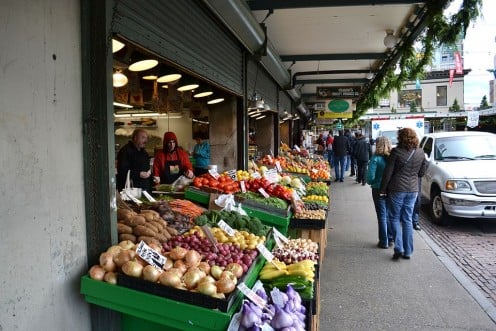
Step 5 - Be alert at the market - save money by smart shopping
This is the supermarket step. Pay attention to coupons and sales. You can look online for coupons, too. However, don't let coupons make you buy anything that you wouldn't buy anyway, unless it's a change to a lesser expensive brand. The best way to do this is to make your list before you check the coupons, and stick to it.
Don't ever go to the supermarket when you're hungry or upset - you'll be much more likely to buy on impulse and to buy worse foods.
Become persistent at the market about price checking by weight. If you don't know how to read the labels, then have the store manager explain their pricing information to you. (Public relations are part of the job.) Or, better yet, if you see someone who is doing a price comparison, ask if that person will quickly explain it to you. Most people will go out of their way to give you very good local information.
When you do price comparisons, you will quickly see that buying foods already prepared is a very costly thing to do. You aren't just paying for convenience. You're paying through the nose for it. So prepare more at one time and freeze it, and you will have some of the convenience you want without the extra price.
Also, if you have access to bulk purchasing, by all means do it. If you're unsure of the quality of a bulk item, buy only a small amount until you see that it's what you want. If you buy in bulk, you're saving money that you would normally spend on the cost of someone else packaging it.
I've written about buying and freezing both white and brown rice in large batches for use later. It will be much more convenient and healthy than using some prepared version of a rice dish.
When you buy produce, pick it from the back of the stack. That's where the newest produce is placed, and it has been picked over the least by the buying public. When you get it home, it will last longer. Also, produce that is not packaged is better quality. You can pick individual items.
If you buy bananas and they become too ripe, peel and freeze them. I've written about freezing fruit and making healthy snacks or desserts later. This will reduce the waste of fruit in your house, and may help you and your family eat more fruit.
Step 6 - lower your costs by gaving gas money
If you drive long distances on a freeway where you aren't slowed by traffic, slow down anyway. Driving at 65-70 in the right or middle lane will save a lot of gas. (If you have cruise control, you can use it to avoid creeping up to the old, faster speeds.) Also, go at a steady pace when you're in town, and spend as much time as possible with your foot off the gas pedal - coast when you can, to a stop or slowing down for a corner. Trying to speed up and stop, and speed up and stop, causes the engine to use a lot of gas. You can save as much as 30% on your gas mileage by using these techniques.
If you're on the freeway and want to use your air conditioning, go ahead - the wind drag with the windows open counters the gas saving effect of having the air conditioning off.
Water is cheaper when it comes from the faucet
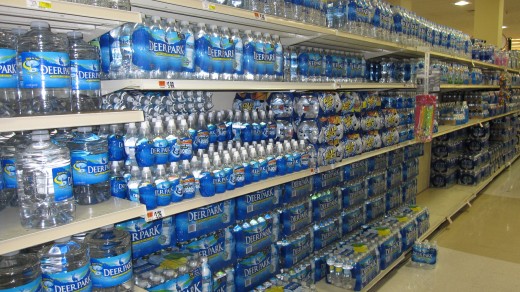
Step 7 - Buy cheaper water
Avoid bottled water. You already pay for water at home, and you don't pay over a dollar per pint! Take it to work in your own container, and refill it at work using the lunchroom sink. If the water tastes bad, buy a container that has a filter built into it.
Buying your own aluminum or stainless steel container for reuse, and buying a water filtering pitcher might seem like a large cost to you up front, but it really won't be. You can get aluminum or steel water bottles at some charitable or advertising events for free. If it feels too expensive to buy a water filtering pitcher new, try your local Goodwill or other secondhand store. If you buy a water filtering pitcher secondhand, clean it, then rinse it out with pure vinegar and let it sit to dry. Pure clear vinegar is a better antiseptic than even alcohol.
Step 8 - Don't let TV make you hungry
Don't watch food commercials on TV! If you want to cut down on the family (and yourself) snacking in the evening, remove those food commercials from your life. If you already use a DVD, fast forward past them.
If not, change channels to a station that you know has no commercials. Don't go back to the channel with the food commercial for at least a minute. Once you start paying attention to food commercials, you will be amazed at how bombarded you are every night with them. You will also become better and better at timing them accurately. They're usually in 15, 30 and 60 second increments.

Step 9 - Make your routine a treat at work
For one week, record all food and drink that you purchase outside of your home. If you have a partner, have the partner do the same. Keep that list of costs until you have finished the project.
Then cut that spending in half, and cut it in half again, until you are comfortable with the change. Eating and drinking outside of your home will become more of a treat than a routine.
You can bring your favorite snacks and keep them in your desk, locker or lunchroom refrigerator. You can bring your coffee or tea in a thermos, and keep extra coffee or tea at work ready to prepare. If you are joining people at a fast food restaurant, buy half of your meal and bring half of your meal. For example, bring your drink in an aluminum water bottle, buy your burger or salad, and bring some fruit or some other treat for dessert.
When you and your partner have reached your comfort levels, record again what you buy during the week. Then times it by 52 weeks in a year. You will very likely see thousands saved during the year and it will motivate you to keep bringing your food and drink to work. (If you want to be very precise, you can compare the food and drink that you purchased at the market and brought with you to that you purchased ready-made, but most people already have a feel for that cost.)
Some very expensive clothing can be found in secondhand stores.

step Ten - Buy the clothes off someone else's back
Take a detailed tour of the discount clothing stores, second hand stores and consignment shops. You will be amazed at the quality of clothing and other household goods that can be found there, and the prices you pay in comparison to new clothing at the regular department stores.
The main difference between the department stores and the discount stores like Roth's or Marshall's is that you buy pre-season in the department store and you buy in-season in the discount clothing store. Many times it's very easy to find clothes in a secondhand store or consignment shop that were never worn and still have the store tags or have hardly been worn.
You will find that you can not only purchase clothing in the discount clothing stores, but you can purchase a wide variety of household goods. When I want new sheets, I always check the discount clothing store first. I can buy 300-400 thread count sheets for less than half the cost that I would pay in a department store or linen shop.
Easy Cooking That Helps You Save Money
- Easy Low Calorie Frozen Desserts or Smoothies Using ...
Delicious ice creamy low-calorie frozen desserts are easy to make, and oh, so delicious! It takes only minutes to do. - How to Cook Brown Rice or White Rice - Perfect Every...
Cooking brown rice or white rice is easy. You need rice, water, a good pot with a tight-fitting lid, and your index finger.
Tell us how you feel about used clothing
Would you buy clothing that someone else has owned?
You know even more ways to save money
Please feel free to add tips that you've thought of in the comments, or write a hub of your own. Share your ideas!
If you haven't joined HubPages yet, join now!
Supplies for weatherizing and saving on water bottles
Please remember to support the writing that you like
If you vote up or vote down an author's writing, you will show the people who follow you what you feel the quality of the writing is. Please support writers by voting up their work.





